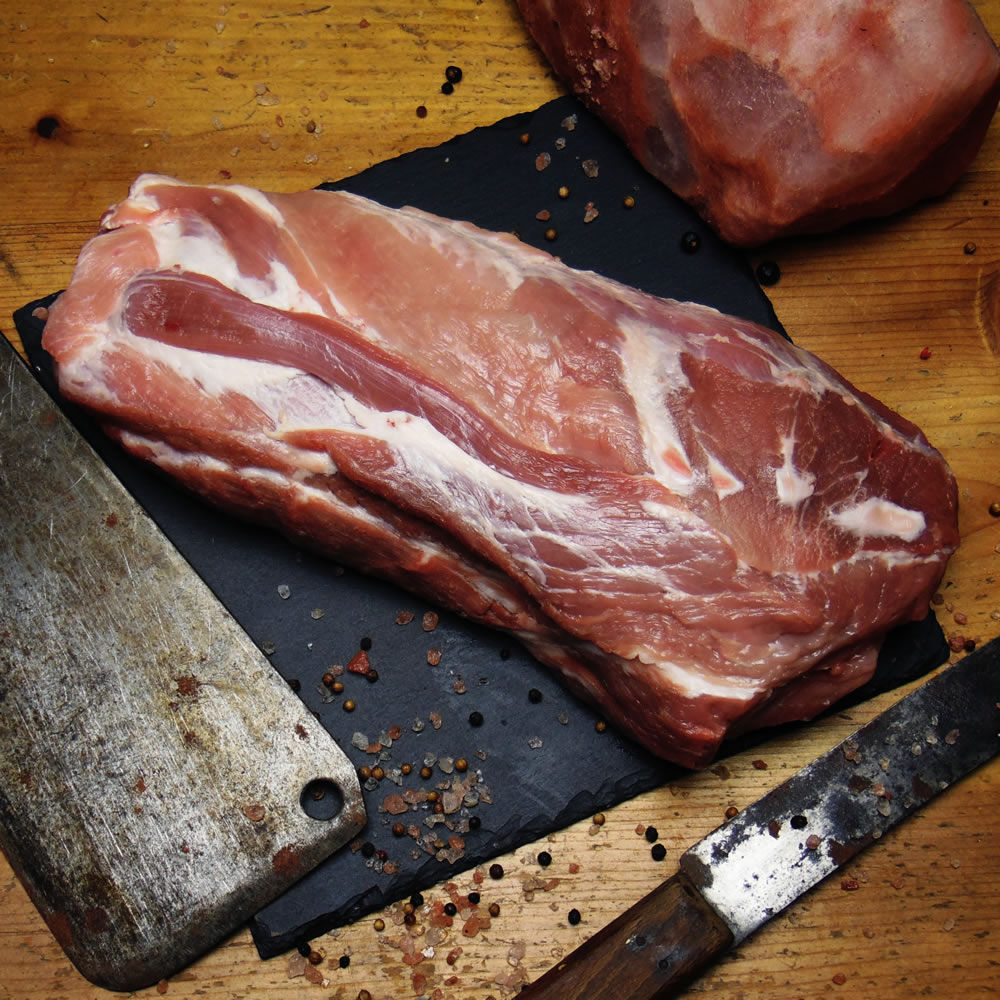Characteristics
- Marbling: One of the standout features of pork collar is its marbling. The intramuscular fat ensures that the meat remains juicy and tender during cooking, making it less prone to drying out compared to leaner cuts.
- Texture: With a fine grain and substantial fat content, pork collar is known for its melt-in-the-mouth texture when cooked properly.
- Flavour: The fat content not only contributes to the tenderness but also infuses the meat with a rich, savoury taste, making it a flavourful choice for various dishes.
Cooking Methods
Pork collar is incredibly versatile and can be cooked using a variety of methods:
- Grilling/BBQ: Due to its marbling, pork collar is excellent for grilling or barbecuing. The fat renders beautifully, creating a caramelised crust while keeping the meat moist.
- Roasting: Slow roasting pork collar allows the fat to melt into the meat, resulting in a tender and succulent roast. It's often recommended to season the meat well and cook it low and slow.
- Braising: This method involves cooking the pork collar in a liquid at a low temperature for an extended period. Braising breaks down the connective tissues, making the meat incredibly tender and infusing it with the flavours of the braising liquid.
- Stir-frying: When sliced thinly, pork collar is perfect for quick stir-fries. The fat content provides a pleasant texture and flavour, even with short cooking times.
Nutritional Information
Pork collar is not only delicious but also a good source of several essential nutrients:
- Protein: High in protein, it supports muscle growth and repair.
- Vitamins: Rich in B vitamins, particularly B1 (thiamine), B3 (niacin), B6, and B12, which are crucial for energy production and brain health.
- Minerals: Provides important minerals such as zinc and selenium, which are vital for immune function and overall health.
Usage in Various Diets
While pork collar is a versatile cut suitable for many culinary traditions, it's particularly valued in:
- Keto and Low-Carb Diets: Its high fat content makes it a fitting choice for those following ketogenic or low-carbohydrate diets.
- Traditional British Cuisine: Pork collar can be used in traditional dishes like roasted pork with apple sauce, pork stews, and more.
- Asian Cuisine: Frequently used in dishes such as Chinese char siu, Korean BBQ, and Japanese shabu-shabu.
Cooking Tips
- Marinating: For added flavour, marinate pork collar overnight before cooking. Acidic components in the marinade, such as vinegar or citrus juice, can help tenderise the meat.
- Resting: After cooking, let the meat rest for a few minutes before slicing. This allows the juices to redistribute, ensuring a juicier bite.
- Slicing Against the Grain: To maximise tenderness, slice the pork collar against the grain, which shortens the muscle fibres and makes the meat easier to chew.
